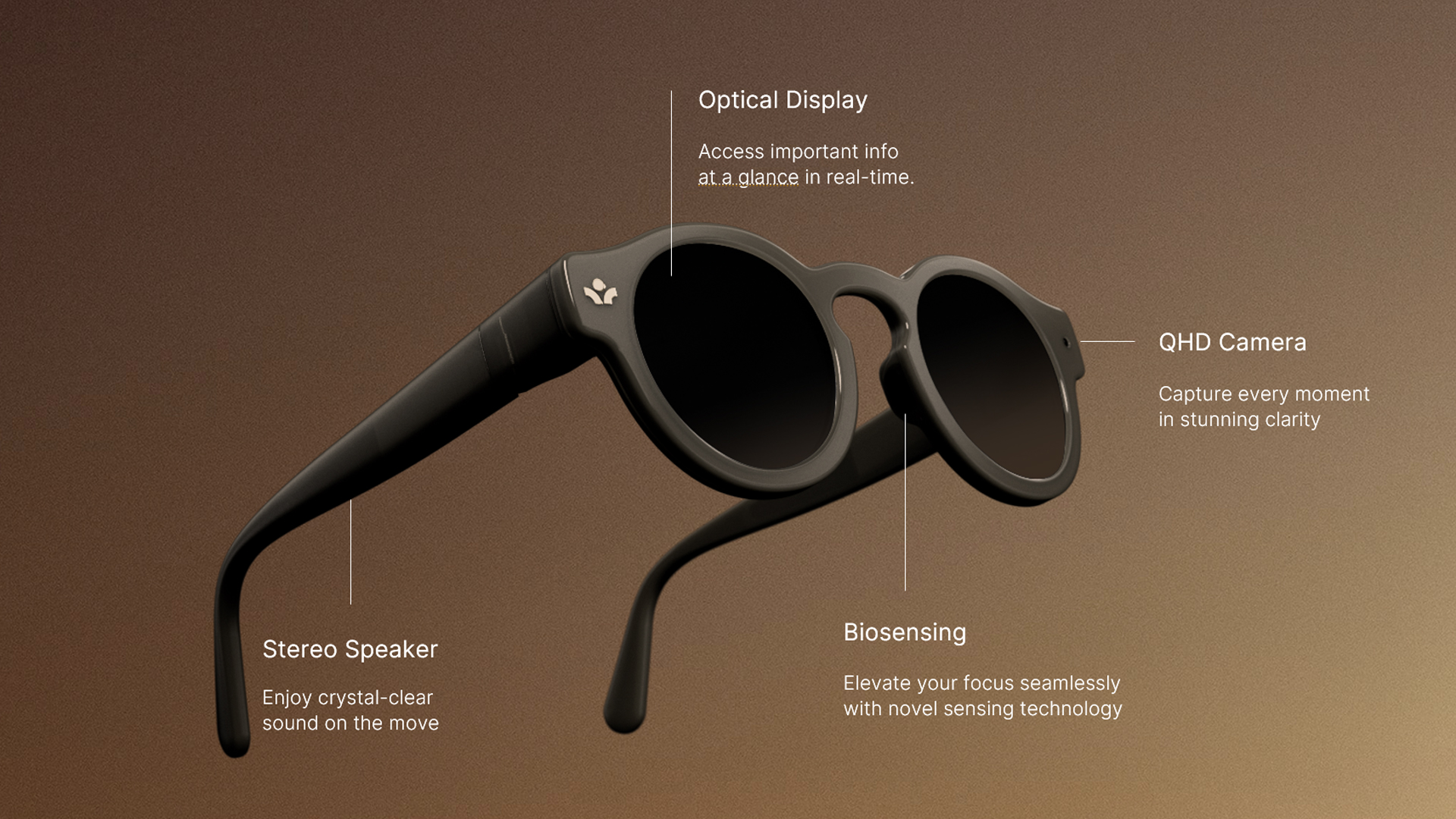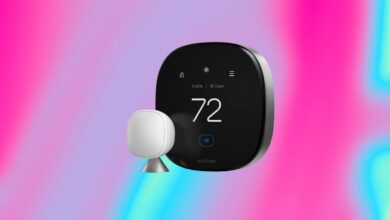Journey Lens revives an old smart glasses idea to solve a modern problem

If there’s a villain in the story of our distracted culture, it’s not necessarily the smartphone, but what lives inside it.
“Smartphones themselves aren’t addictive, it’s the motivation behind social media trying to maximize attention that makes them addictive. When you try to access a simple thing on a smartphone, the interface is designed in such a way that it’s easy to get sucked into doom scrolling,” said Farbod Shakouri, co-founder and CEO at Phantom Technology when I spoke to him a few weeks ago.
Shakouri and his company have come up with a solution reminiscent of the original wearable glasses: think Google Glass, but without the clutter and with a lot more artificial intelligence.
The Journey Lens, which go on pre-order today, weigh just 40 grams (Meta Ry-Ban Wayfarers, by contrast, weigh about 50 grams) and look like a fashionable pair of glasses or sunglasses. But they hide a secret: a small micro LED display that’s guided toward your eye via a prism in the upper left or right corner of the frame. It’s designed to provide necessary information and app access, but its really more focused on keeping a helpful eye on you.
In addition to the display, Journey Lens includes a sensor in the bridge of the nose that can detect distractions and attention. Shakouri claimed the frames can “monitor and guide your focus.” Phantom calls this feature “Focus Compass,” and it will keep an eye on your daily routine and tell you when you’re getting distracted.
The frames feature a single microphone (no far mic, so you might not be able to hear well when you’re outdoors), so you can ask the AI (powered by ChatGPT-4o and other LLMs in the future) questions about what you see through the lens’s 2K camera.

You can also use the Journey Lens to keep a journal, but in a more interactive, conversational way. Shakouri described a scenario where you’re climbing a mountain and the Journey Lens AI asks you, unprompted, through the stereo speakers, “How was the climb?” You could tell the Lens that the journey was tough but worth it and that you want to remember it. The Lens would then automatically capture photos and a short video to create an album.
As for how the lens knows what you’re doing, it uses an onboard neural net to interpret images, and then works with the companion app and the big language model on your phone to deliver full understanding. Shakouri told me that your data never goes to the cloud.
Like Google Glass, Journey Lens doesn’t attempt to augment your reality. Instead, the display’s prism is positioned far from the center of either lens, and you have to look to the left or right (depending on where you place the prism) to see something akin to an iPad screen held at arm’s length.
I’ve used Google Glass for a while and I understand the interaction, but I also remember it feeling less than natural. Hopefully the view on Journey Lens isn’t too overwhelming and the images are bright enough for a quick glance. I know they’ll be bright. Phantom claims the Journey Lens display is up to 4000 nits bright.
Since the tiny display is in a standard pair of smart glasses (which come in a variety of styles), no one might notice that tiny prism. It’ll be nicely hidden on a pair of sunglasses. However, even on clear lenses (prescription or standard), the top portion of the lens will be tinted to hide the display tech.
Journey Lens is due out next year and is set to cost $195 / £150 (around AU$290), with pre-orders starting today. If it holds up, it’ll be considerably cheaper than competing smart frames from Amazon (Echo Frames) and Meta. There is a catch, though. If you want access to the smart companion, Life Journal, and the full suite of onboard apps, you’ll need to sign up for a monthly subscription fee, which ranges from $7 to $18 per month depending on which services you opt for.
With fully AR-ready lenses expected this year from companies like Meta and next year from Google and Samsung, Phantom may have timed its, ahem, Journey poorly. After all, the imaging tech is decidedly first-gen, but also potentially less intrusive than what some of these next-gen AR/AI lenses will bring.
Perhaps the solution to distractibility is not to merge a technological layer with your entire world, but to keep the technology in its own corner and only have it emerge when you look at it or call it by name.




